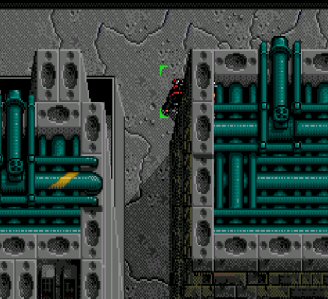quote:Original post by leiavoia
Reality Check: well, why do you want transparency if there is nothing behind it? See what i mean?
If there isn't, just make a regular bmp that joins to the other tiles visually. Otherwise, blit the ground first, then whatever is on top of the ground for layered effect. There isn't any other way to do it.
However, keep in mind that many of ye old classic RPGs just used regular non-transparent tiles to achieve their effects.
The other thing i'll point out is that you are creating what appears to be a 3/4 perspective with square tiles. This is bad from a design point of view (like using a hammer to set screws). Either make a true top-down view with square tiles (like Final Fantasy), or a 3/4 view with diamond tiles.
here is some wonderfull info on isometric vs topdown tiling systems and how to make them work.
EDIT: oh, and when you open a thread, say "hi" or "hello". "high" is the opposite of "low" ;-)
hey leai,
i was waiting for you to help me
something i DONT understand, is this:

take shadwrun for example (my fav! and inspired me to make this game)... anyway, you see how im "behind" the building... how do they do this? i mean, i could manage "this tile is non solid, this tile is solid..".. but how do they have certain tiles draw OVER the player and not under him? im thinking they used layers for this.. so im gunna wind up having to make layers anyway? does anyone have experiance with making a top down square tiled RPG have any advice? and how does it all work? do i have something like 3 map[][] arrays, one "lowest level", one "middle level", and one "highest level"... the lowest level stuff would be the floor, the middle level stuff would be buildings (which then could have transparent pieces)... the higest level stuff would be the tops of buildings (ala the pic so i could go behind the building) or even lights hanging from the roof of a building (another thing shadowrun has...) but i think the hardest part would be connecting ALL of the maps, and doing collision.. im guessing collision would be performed on all the maps? only the 'middle' one? or maybe all 3? BAH! i DONT want to have layers, unless i have to. but did shadowrun have them, or what technique do you tihnk they used to get that behind-the-building effect? gunna check out that link you showed... thanks a lot for your help man
[edited by - graveyard filla on May 28, 2004 10:58:42 PM]






